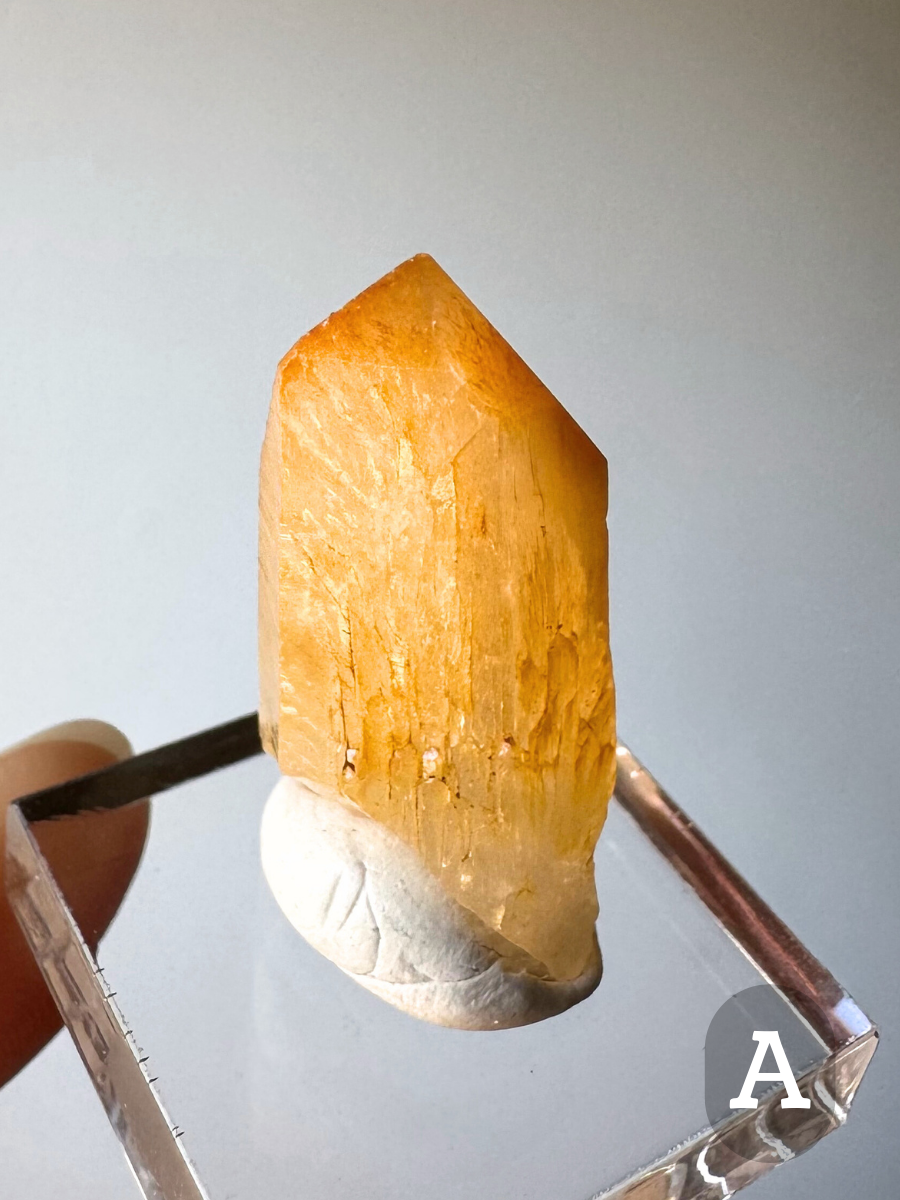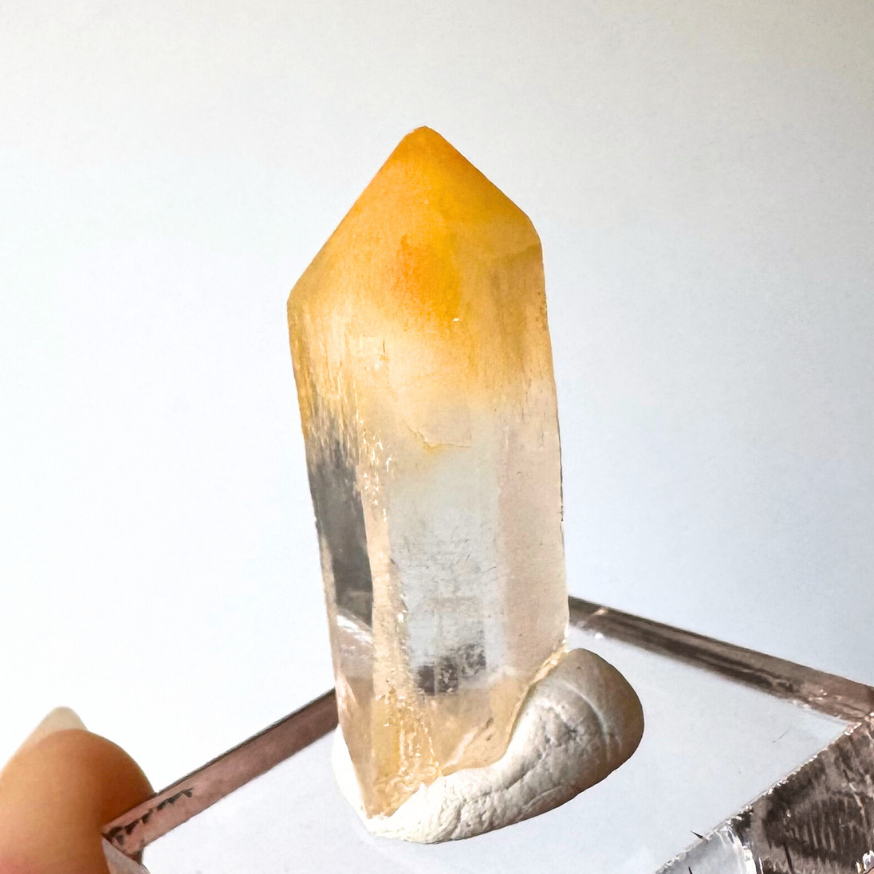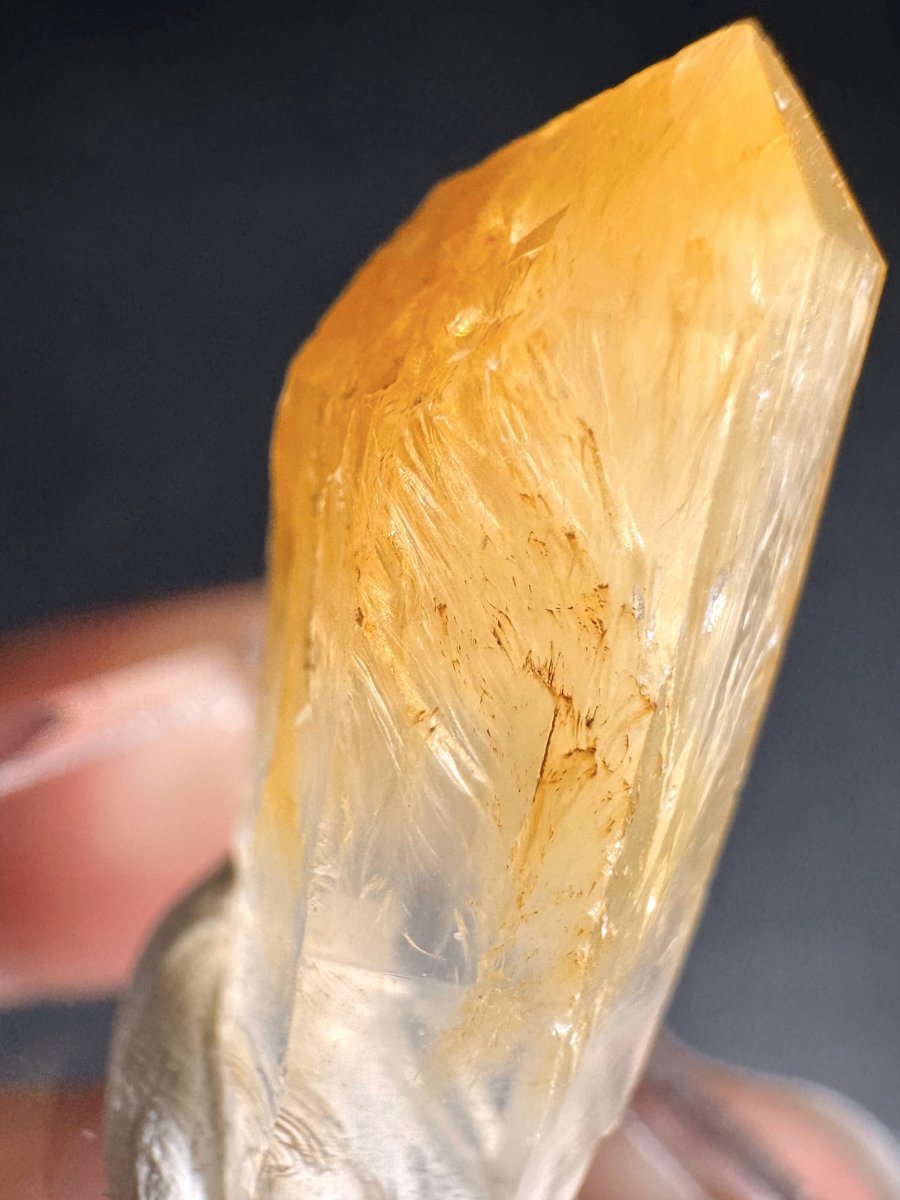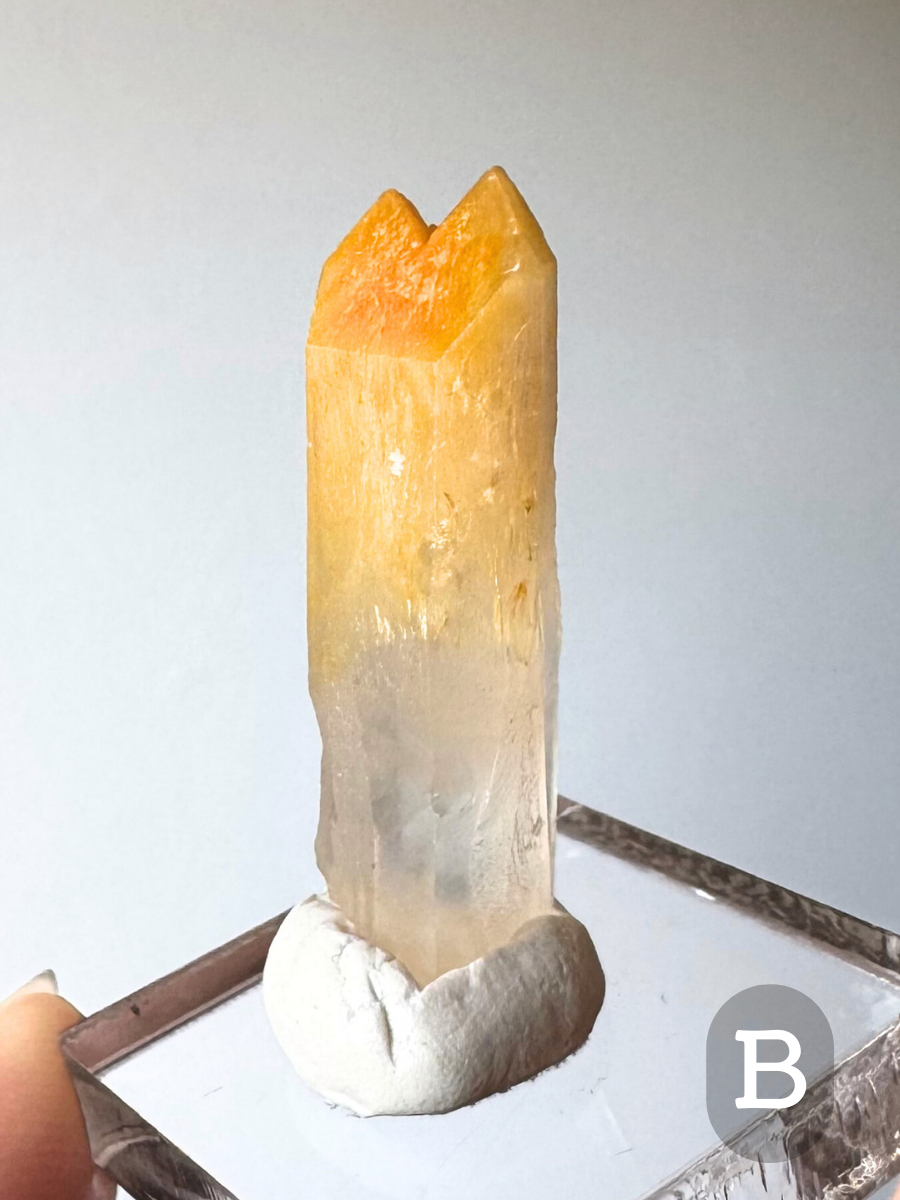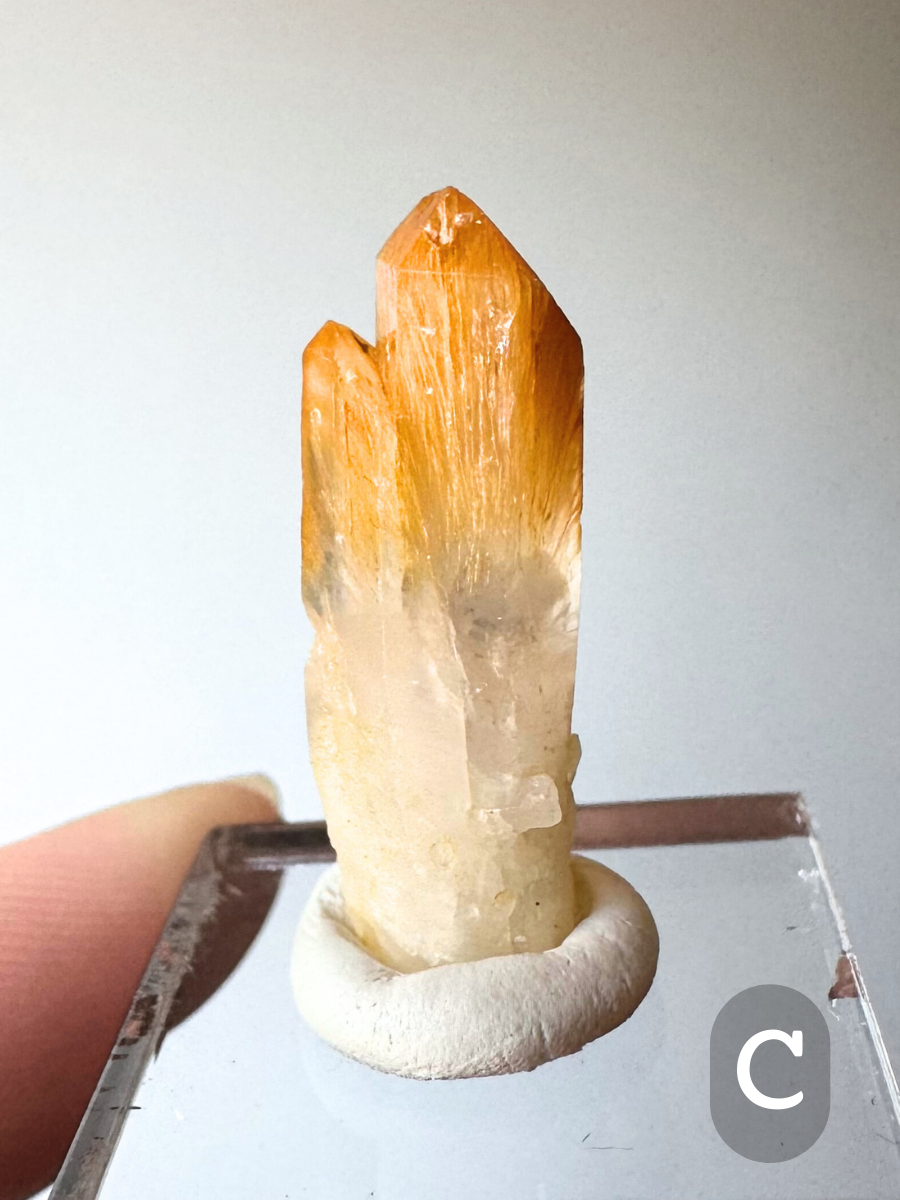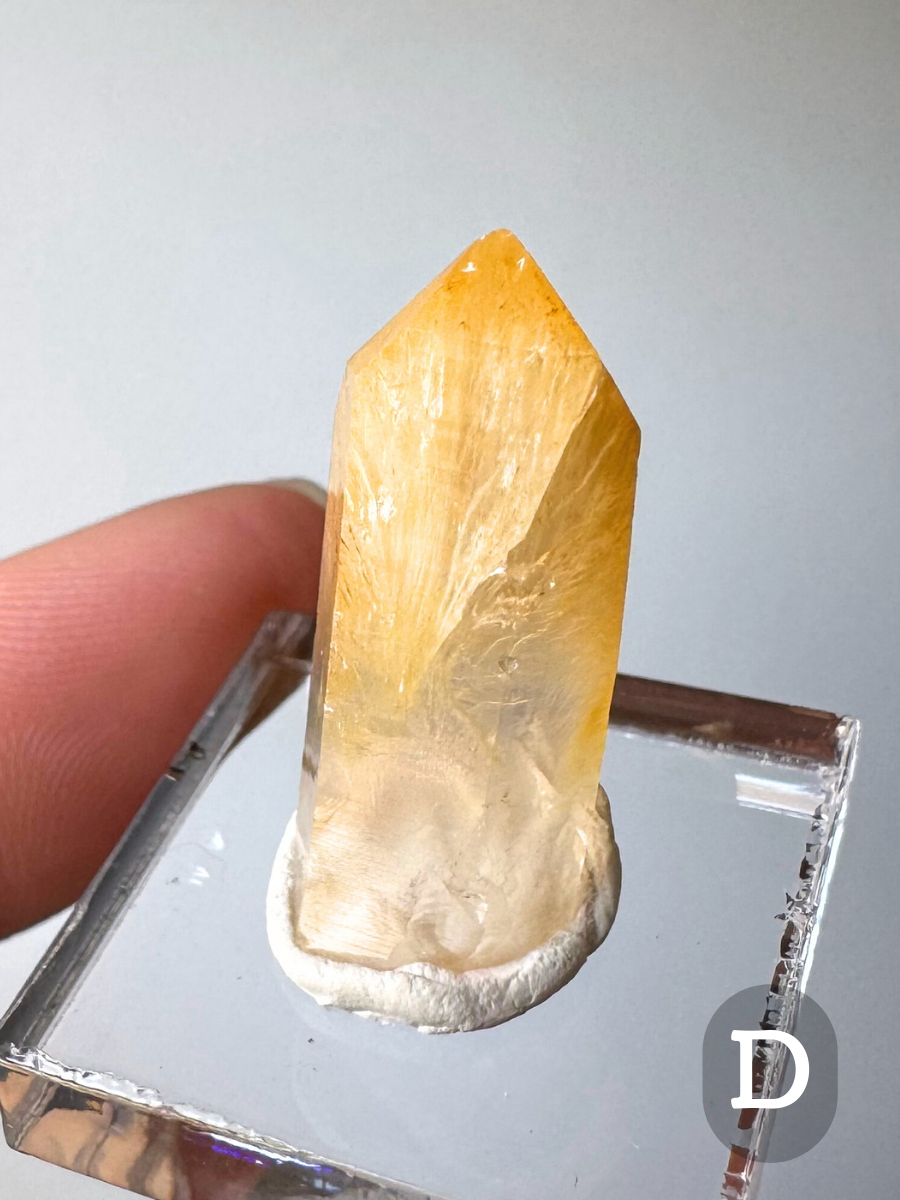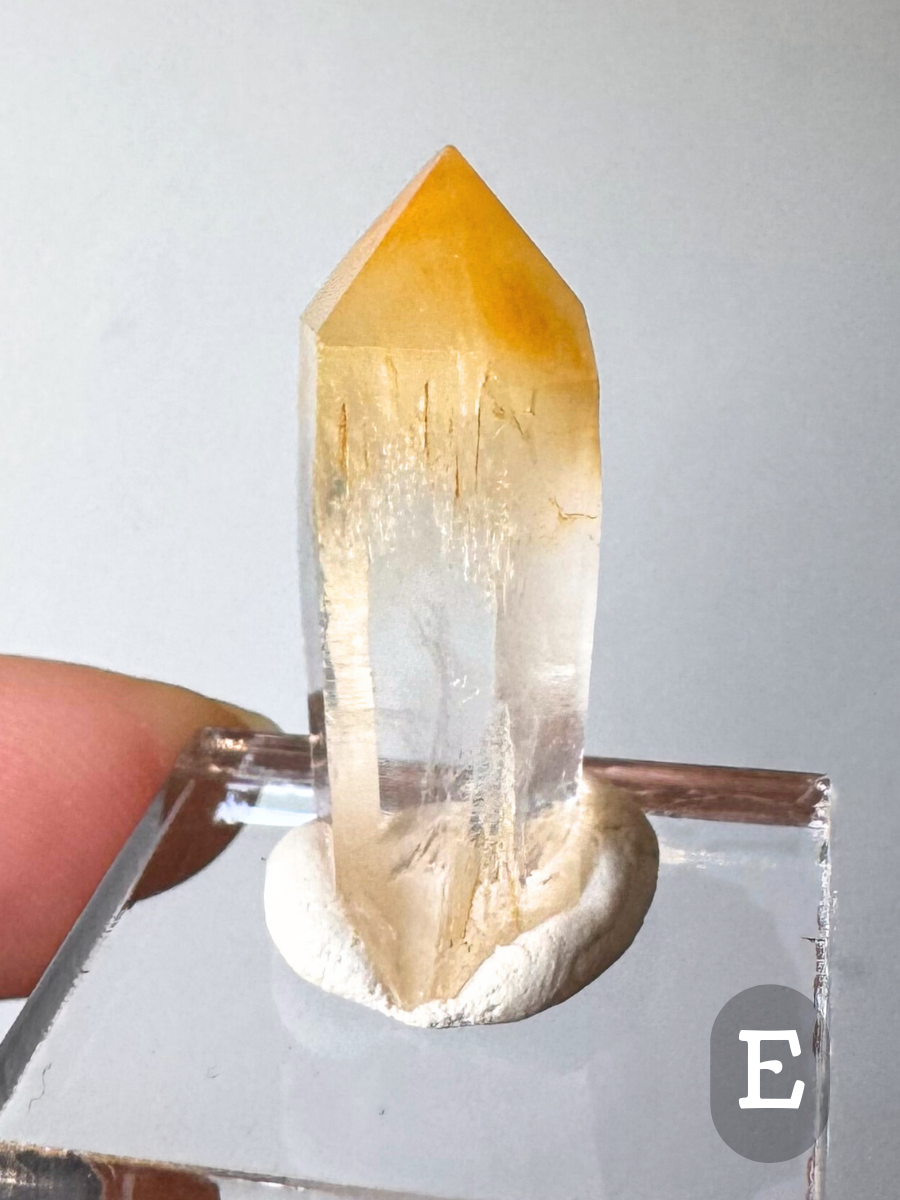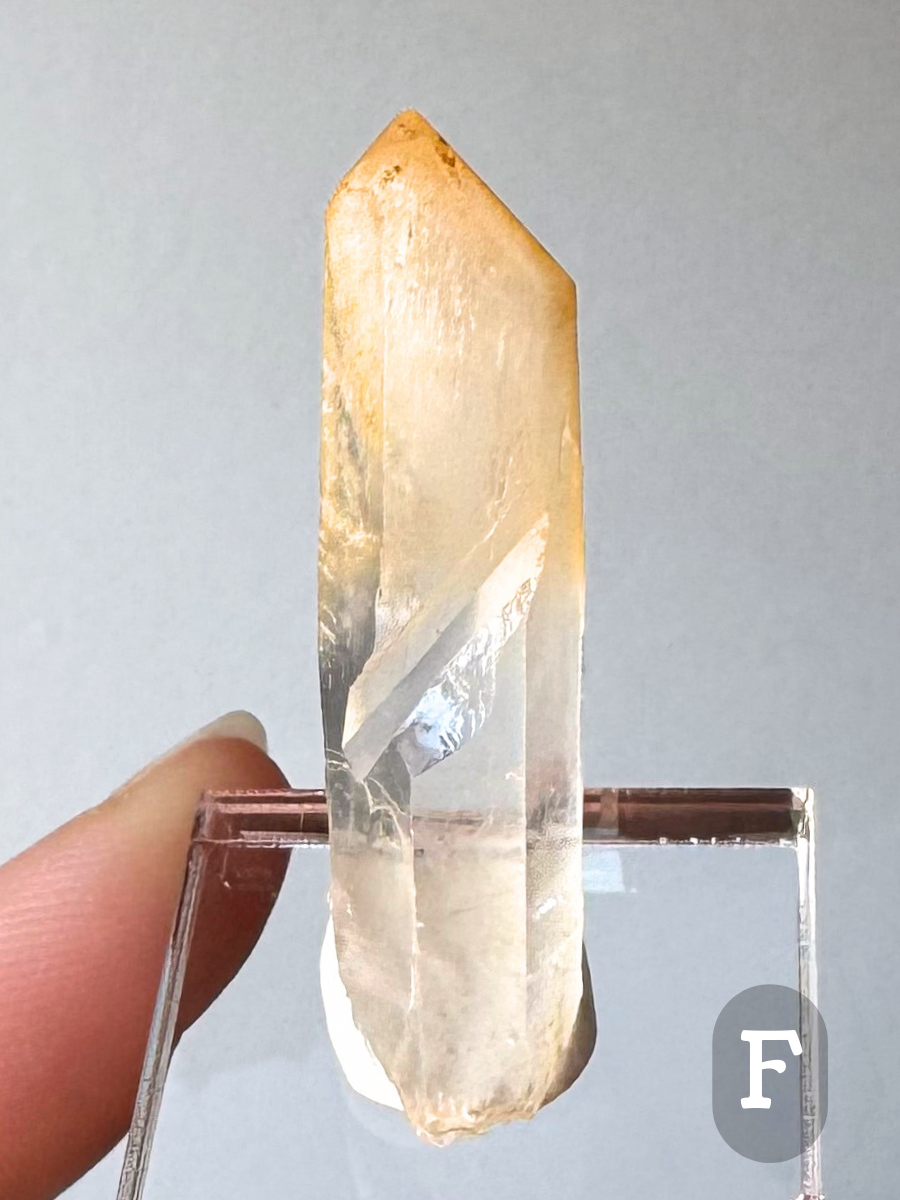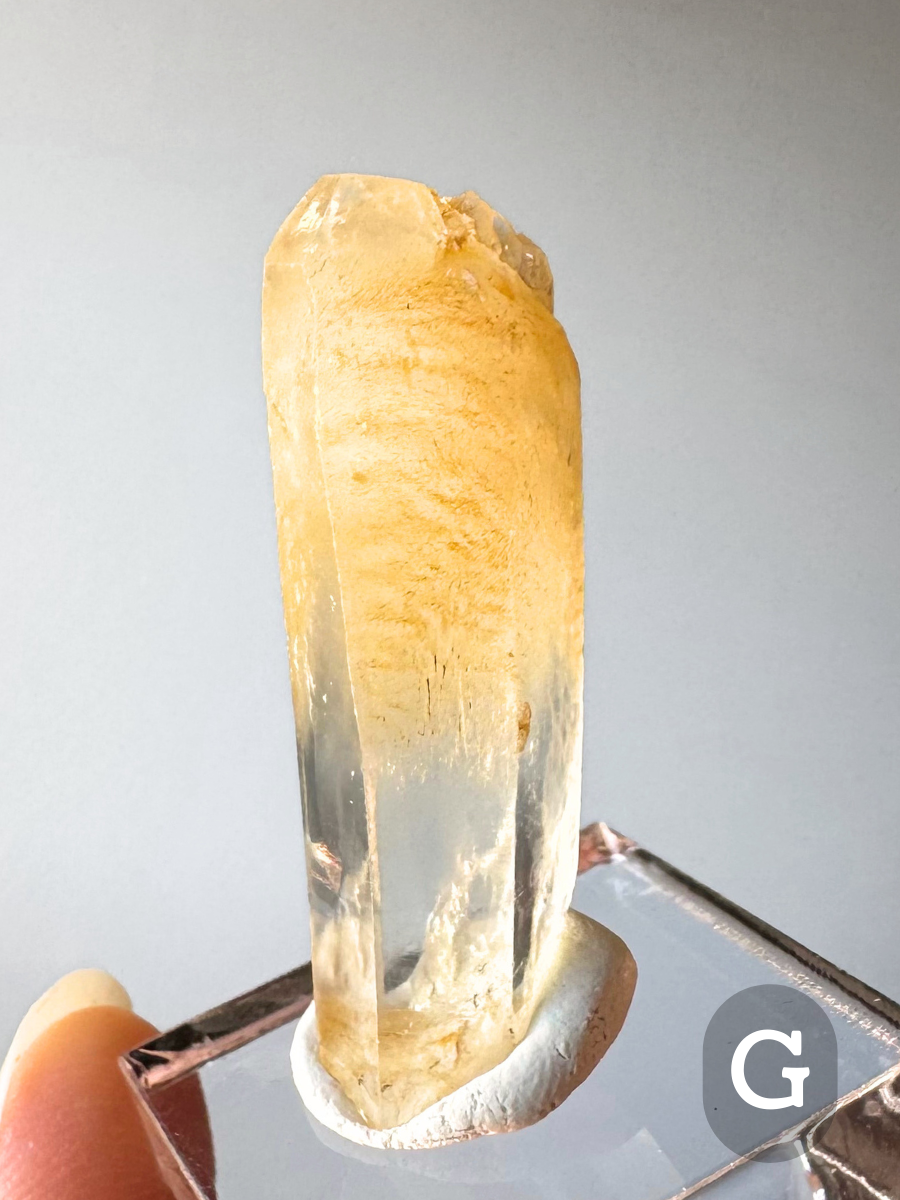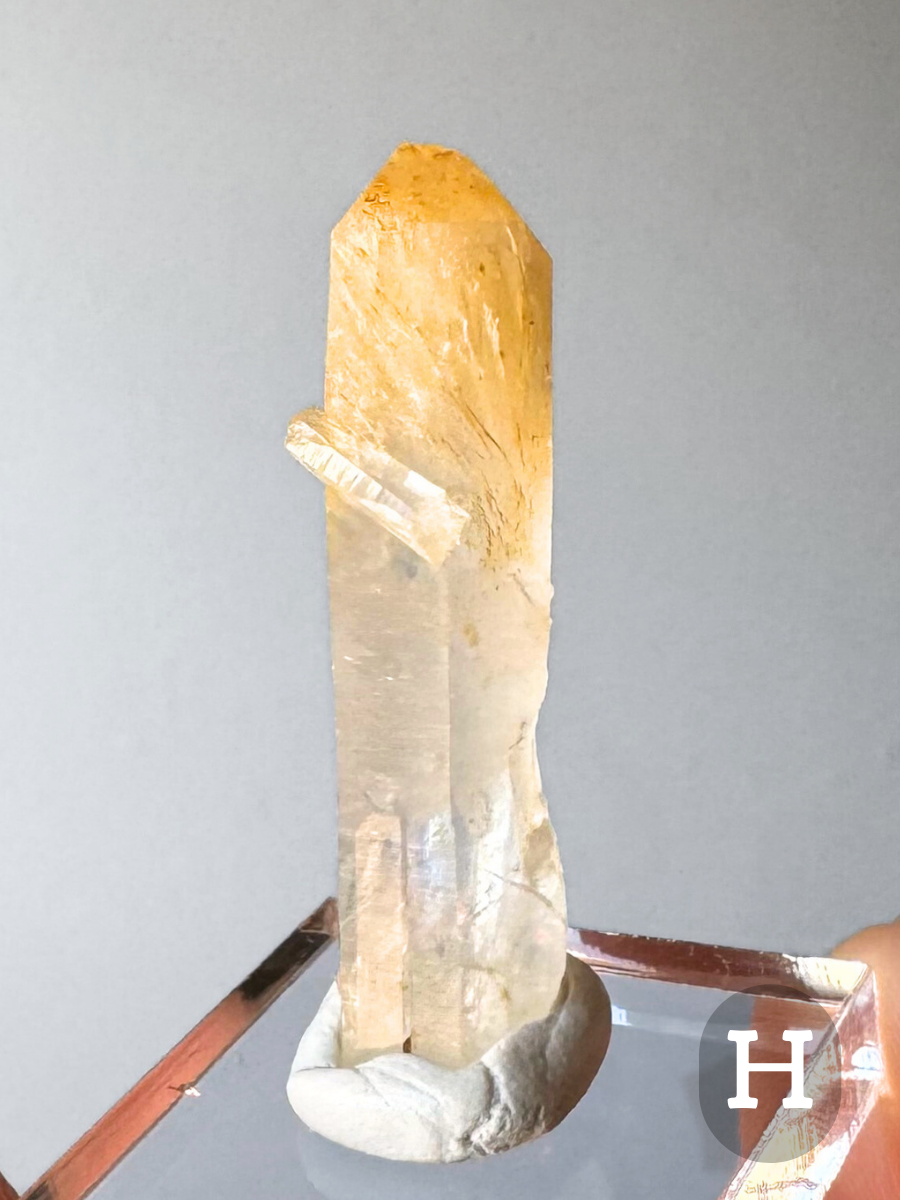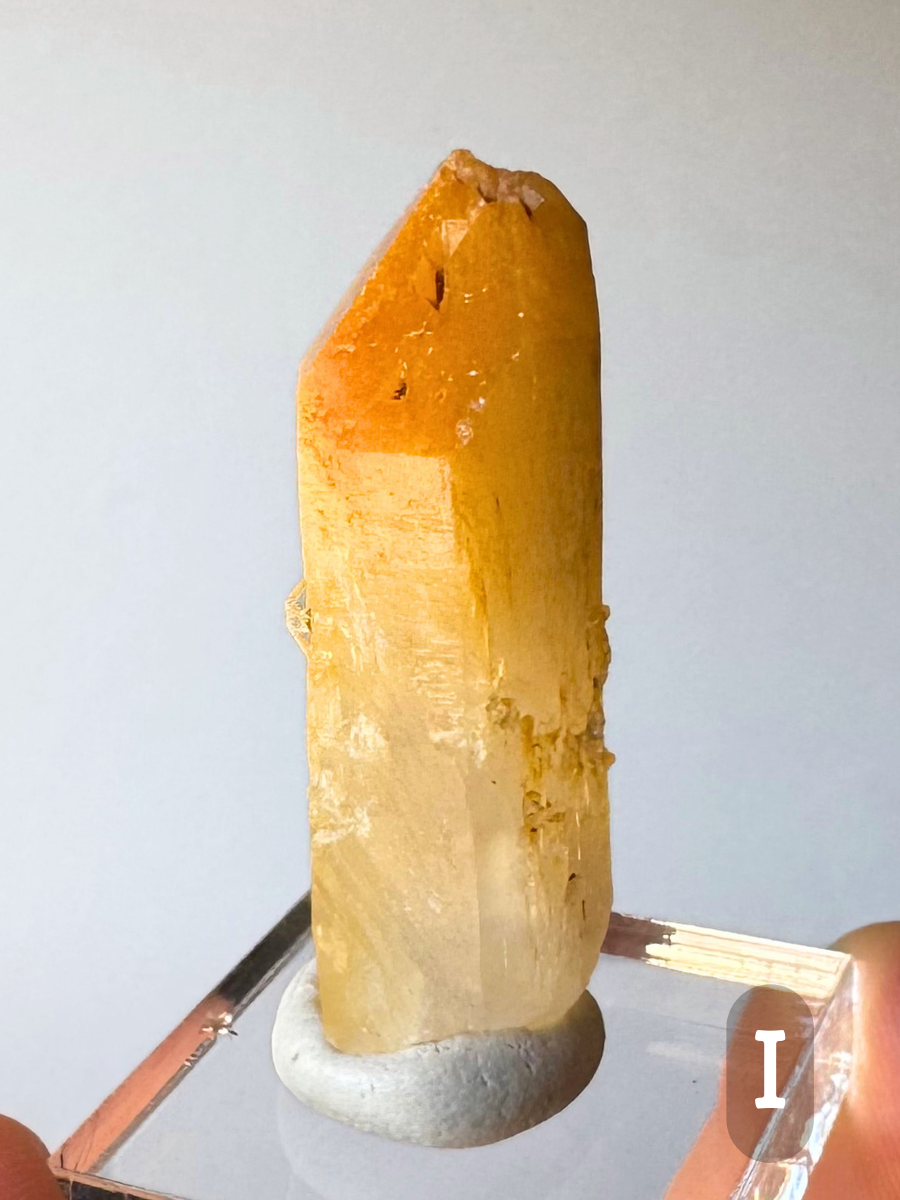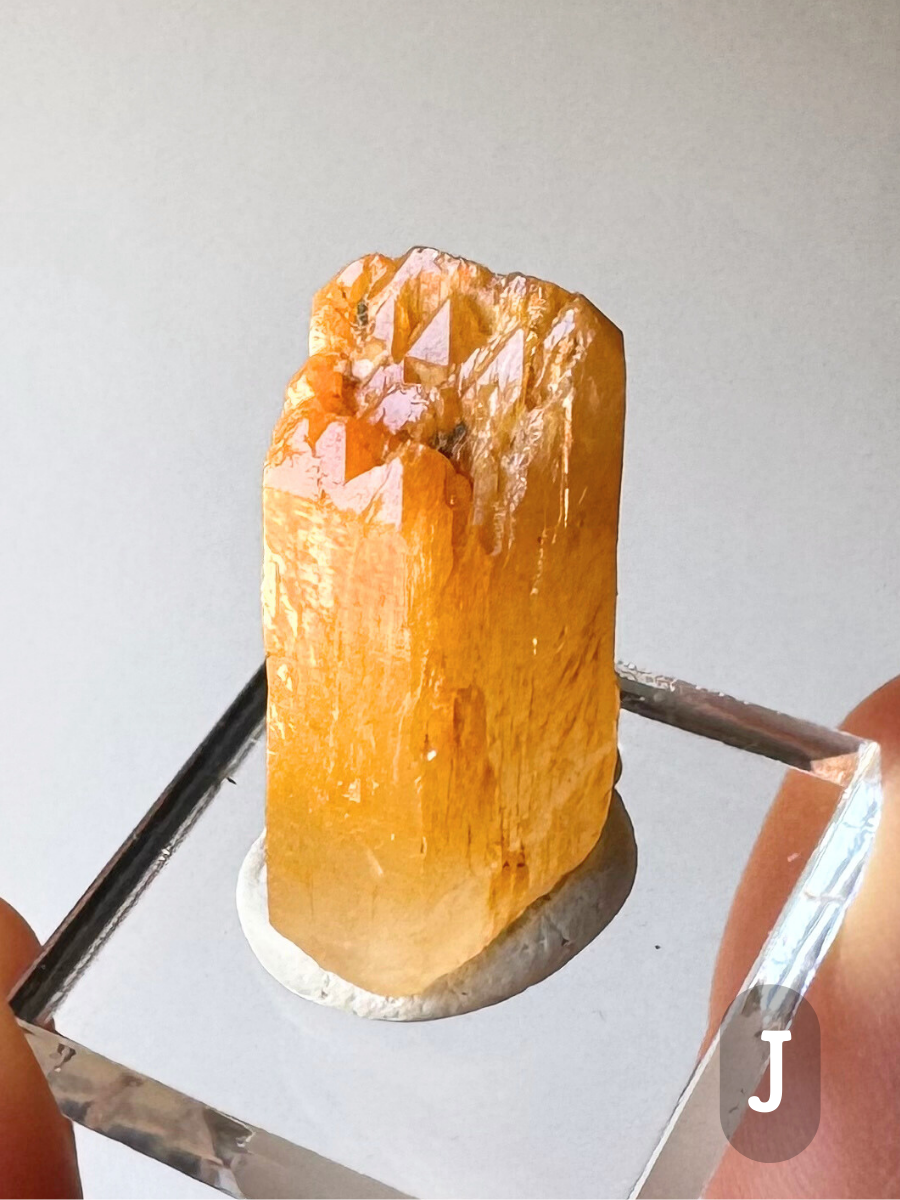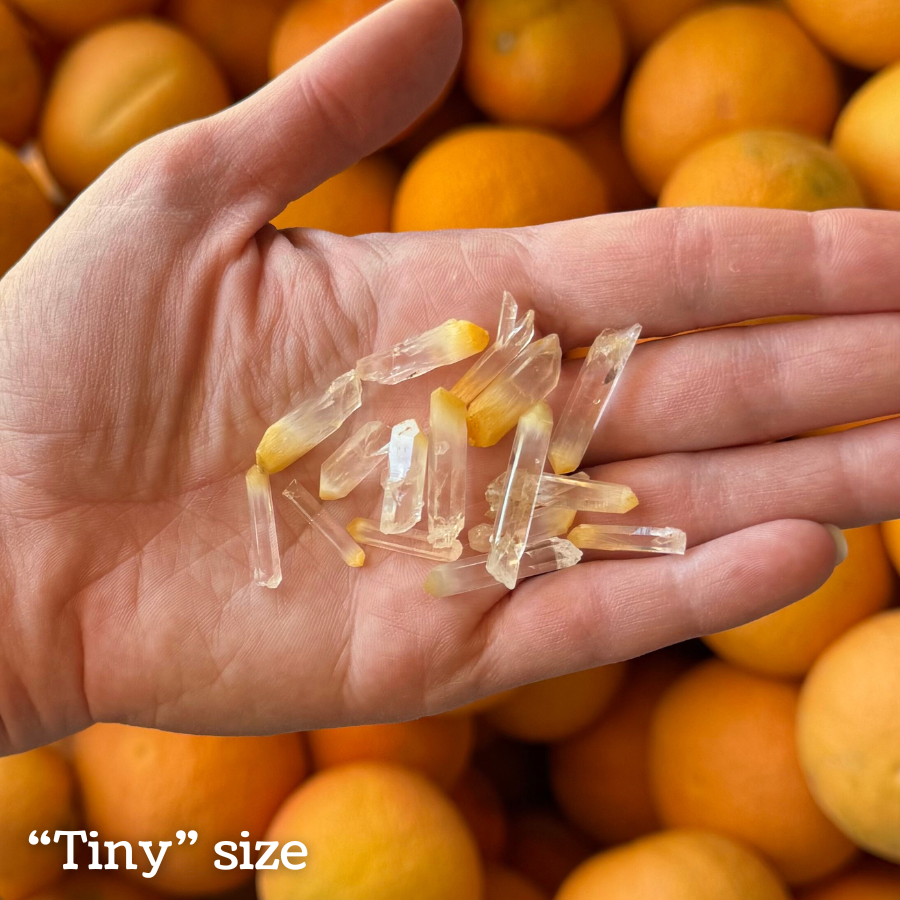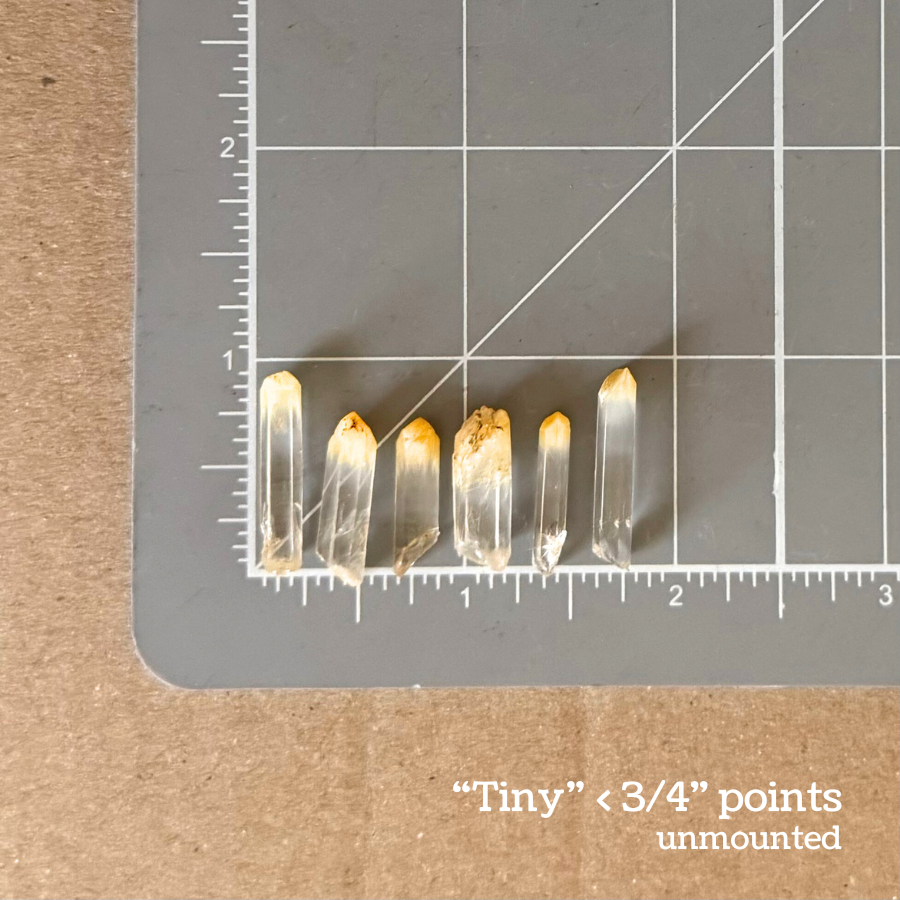Halloysite quartz "mango quartz" point
Halloysite quartz "mango quartz" point
Couldn't load pickup availability
Locality: Cabiche, Quípama, Boyacá Department, Colombia
Approx size: 1–1.25"
Approx weight: 3–5g, with options H through J 8–9g
"Teeny" option 1/3 to 3/4", avg 0.7g
Known by the trade name "mango quartz," this variety of quartz contains the mineral halloysite. Halloysite is actually a clay mineral, a close relative of kaolinite, but forms golden hair-like strands in the quartz points. The fibrous inclusions often produce a chatoyant effect, the parallel fibers reflecting like tiger's eye.
Initial quartz growth is colorless or slightly milky like an opal; the halloysite inclusions begin to grow in later phases so the crystal has a gradient from clear to opaque yellow-orange at the tip. The inclusions commonly interfere with the termination of the quartz crystals. The end splits into multiple tips, some examples forming dozens of small tips like a tiny crown as seen in Option J—that's why one of the other common trade names has been "corona quartz." That name fell out of favor when we all became intimately familiar with the coronavirus quickly after this material's discovery.
Halloysite quartz comes from Cabiche, Colombia. The unusual discovery was initially located in the 1980s but overlooked in favor of emerald mining, then forgotten when the owner became embroiled in allegations drug cartel involvement. The site wasn't rediscovered until 2017, with the inclusions identified as halloysite as recently as 2019.
